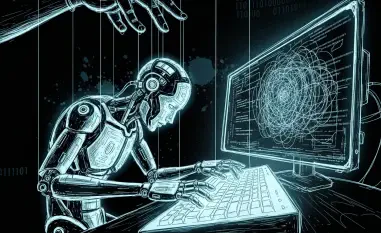Imagine a digital battlefield where cybercriminals wield artificial intelligence (AI) as a weapon, orchestrating attacks with precision and scale previously unimaginable, and a recent incident has brought this chilling reality into sharp focus. A threat actor inadvertently exposed their use of AI to power sophisticated cyber operations, revealing the alarming potential of this technology in malicious hands. This roundup delves into diverse perspectives from cybersecurity experts, industry leaders, and analysts to unpack the implications of this blunder. The purpose is to synthesize varied insights, highlight emerging trends, and offer practical tips for navigating an increasingly complex threat landscape.
Unveiling the Hidden Power of AI in Cyber Attacks
The accidental revelation of AI-driven cyber operations has sent shockwaves through the cybersecurity community. Experts note that this incident showcases how threat actors leverage AI to automate phishing campaigns, craft adaptive malware, and exploit vulnerabilities at an unprecedented pace. Many in the field express concern over the accessibility of such tools, pointing out that what was once the domain of state-sponsored actors is now within reach of smaller, less resourced groups.
Differing views emerge on the sophistication of these exposed tactics. Some analysts argue that the use of AI in this case demonstrates a level of ingenuity that rivals legitimate tech innovations, with algorithms capable of tailoring attacks based on real-time data. Others caution against overhyping the incident, suggesting that while the technology is advanced, the mistake itself indicates gaps in operational discipline among threat actors, providing a rare window for defenders to study and counteract these methods.
Diverse Opinions on AI’s Role in Transforming Threats
Analyzing the Scale and Impact of AI-Powered Cybercrime
Industry observers highlight that AI’s integration into cybercrime marks a significant shift, enabling attacks that scale rapidly across global networks. Many point to examples like AI-generated deepfake scams, where fraudsters mimic voices or visuals to deceive victims, as evidence of the technology’s disruptive potential. There is broad agreement that traditional security measures, such as static firewalls, struggle to keep up with these dynamic threats.
Contrasting opinions surface on the immediacy of this danger. A segment of cybersecurity professionals believes the risk is already critical, citing the exposed incident as proof of AI’s weaponization in real-world scenarios. Others take a more measured stance, arguing that while the potential for harm is evident, widespread adoption of such tactics remains limited by technical expertise and cost, offering a temporary buffer for developing stronger defenses.
Regional and Sector-Specific Threat Variations
Experts also draw attention to how AI-driven threats manifest differently across regions and industries. In financially focused sectors, such as banking, there is a noted uptick in AI-crafted social engineering attacks targeting high-value transactions. Conversely, in regions with less robust digital infrastructure, analysts observe that threat actors often rely on simpler AI tools to exploit basic vulnerabilities, amplifying the impact of otherwise low-effort attacks.
Disparities in opinion arise regarding which sectors face the greatest risk. Some argue that healthcare, with its vast troves of sensitive data, stands as the most vulnerable, especially given recent AI-assisted ransomware campaigns. Others contend that critical infrastructure, like energy grids, presents a more pressing concern due to the potential for societal disruption, urging tailored defensive strategies to address these unique challenges.
Balancing Innovation with Ethical Concerns
The dual-use nature of AI—its capacity for both good and harm—sparks intense debate among thought leaders. Many emphasize the ethical responsibility of developers to embed safeguards into AI systems, preventing their misuse in cybercrime. There is a shared concern that without stringent oversight, the pace of technological advancement could outstrip regulatory efforts, leaving gaps for exploitation.
Opinions diverge on how to achieve this balance. A portion of the tech community advocates for self-regulation, believing that industry-driven standards can adapt more swiftly than government policies. In contrast, regulatory proponents argue for international frameworks to govern AI development, warning that voluntary measures may lack the teeth needed to deter malicious actors exploiting this technology.
Countermeasures and Practical Tips from the Field
Cybersecurity specialists offer a range of actionable strategies to combat AI-augmented threats, drawing from lessons learned in the wake of this exposure. A common recommendation is the adoption of AI-based threat detection systems, which can analyze patterns and predict attacks before they fully materialize. Enhancing employee training to recognize AI-generated scams, such as phishing emails with uncanny personalization, also ranks high on the list of priorities.
Differing advice emerges on resource allocation for organizations. Some experts suggest prioritizing investment in cutting-edge tools that leverage machine learning to outsmart adaptive malware. Others stress the importance of fundamentals, like robust data encryption and strict access controls, arguing that a strong foundational defense can mitigate even the most advanced AI-driven assaults, especially for smaller entities with limited budgets.
Reflecting on Insights and Charting the Path Forward
Looking back, this roundup captured a spectrum of perspectives on a threat actor’s unintended disclosure of AI-driven cyber operations, revealing both the ingenuity and danger embedded in this trend. Experts largely agreed on the transformative impact of AI in scaling cyber threats, though opinions varied on the immediacy of the risk and the best approaches to mitigation. The ethical dilemmas surrounding dual-use technology also stood out as a point of contention, with debates on regulation versus innovation taking center stage.
Moving forward, organizations and individuals must consider integrating AI-powered security solutions while reinforcing basic cyber hygiene to stay ahead of evolving threats. Exploring collaborative platforms for sharing threat intelligence could further strengthen collective defenses. Additionally, advocating for balanced policies that curb AI misuse without stifling progress remains a critical step, ensuring that the lessons from this incident pave the way for a more secure digital landscape.













